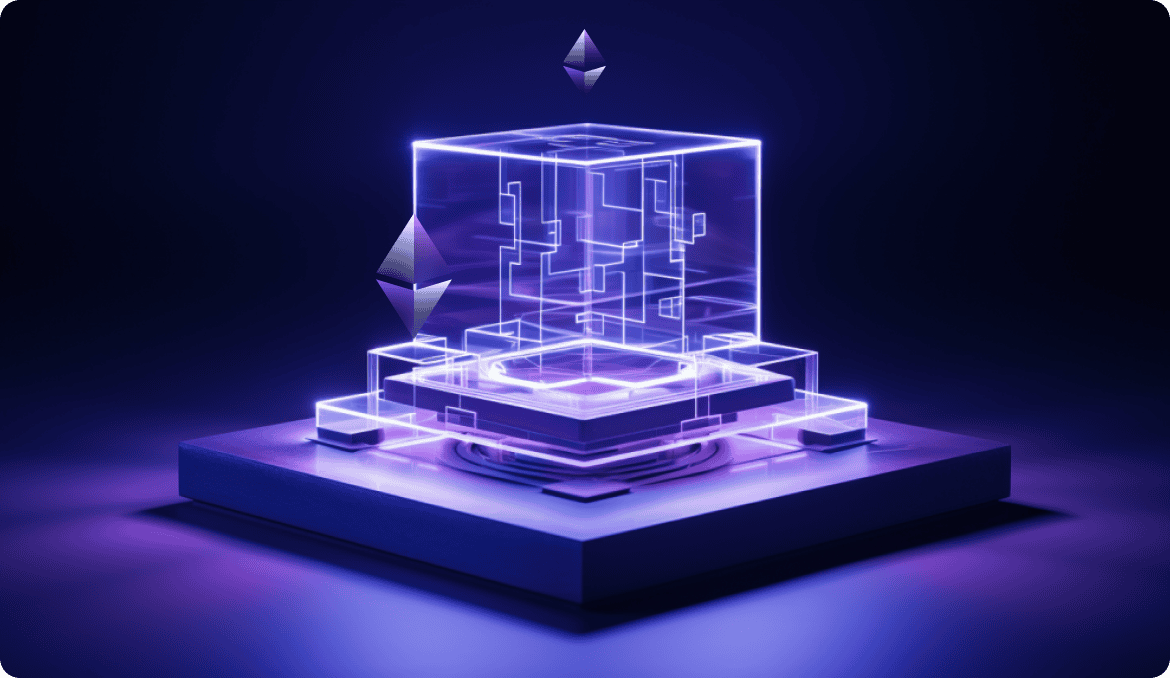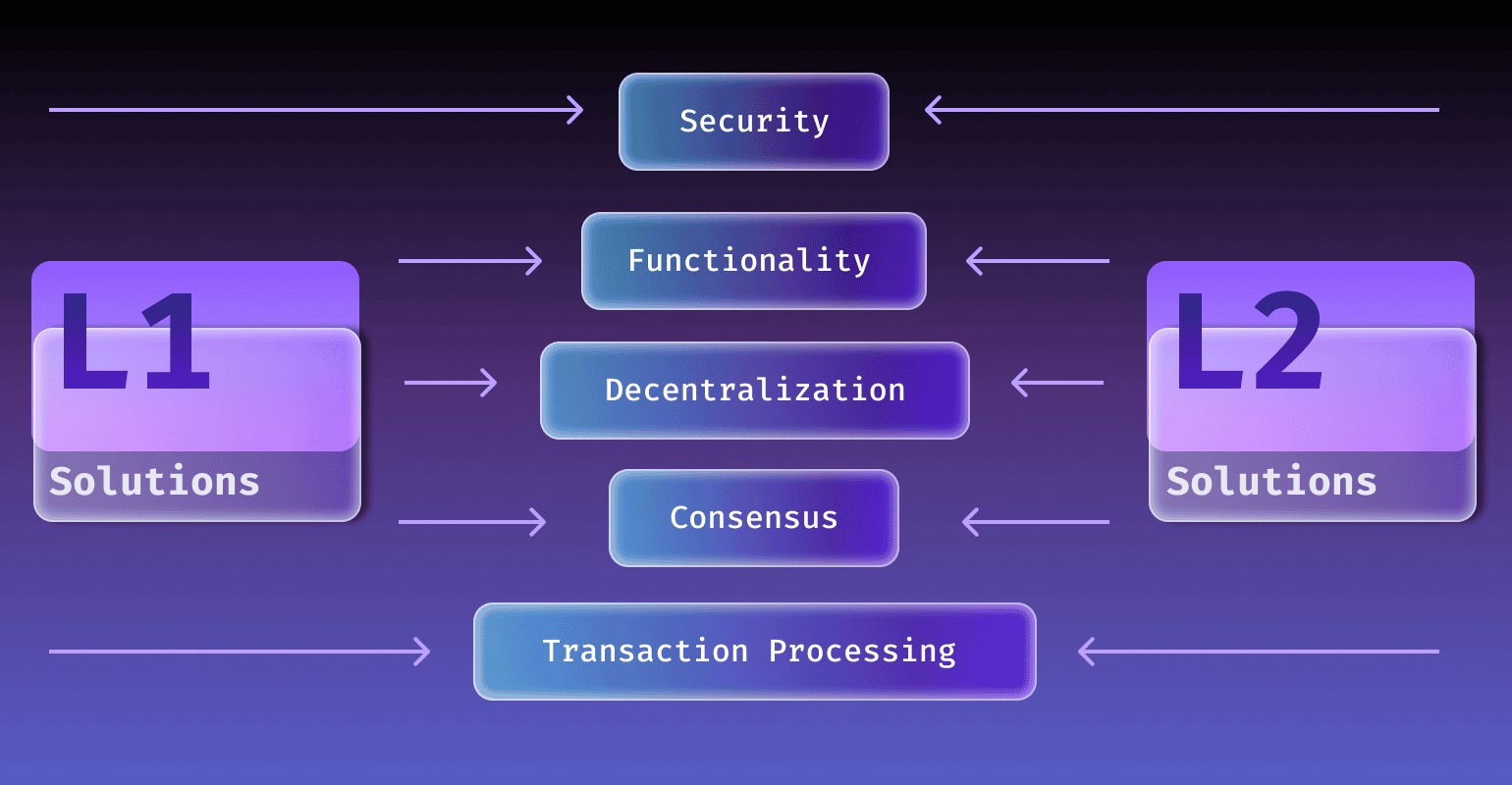
As the adoption of blockchain technology continues to soar, public networks are experiencing an unprecedented surge in users. Among these networks, Ethereum stands out as the most popular, renowned for its security. However, its security features come at a cost: scalability challenges and high transaction fees. Although the anticipated migration to Proof-of-Stake holds promises of addressing these issues, Ethereum's scalability challenges and high fees still persist.
Fortunately, a solution that offers superior scalability, enhanced user experience, and lower fees is already here – Layer-2 networks. Built on top of existing Layer-1 networks like Ethereum and Bitcoin, Layer-2 networks leverage their security while significantly improving scalability and efficiency. These networks strike a remarkable balance between security, decentralization, scalability, and reduced fees.

Since the beginning of 2023, the market for Layer-2 solutions has been experiencing rapid growth. As of May 2023, the Total Value Locked (TVL) in the Layer-2 solutions market is estimated at a staggering $8.49 billion. Given these developments, one central question arises: what makes Layer-2 blockchain solutions so sophisticated? Let's delve deeper and explore the intricacies of this revolutionary technology.
Why are Scaling Solutions Necessary?
Blockchain technology, with its transformative potential, faces significant challenges such as scalability, limited transaction throughput, and transaction finality. Additionally, users often encounter exorbitant gas fees due to network congestion. Security risks and the need for increased privacy also persist as pressing concerns in the blockchain realm.
In this context, Layer-2 scaling solutions emerge as a beacon of hope. They are designed to tackle these challenges head-on, offering an efficient way to unlock the full potential of blockchain technology. For smart contract developers, these solutions bring particular benefits. By harnessing Layer-2 scaling solutions, developers can significantly enhance scalability and throughput without making substantial changes to the smart contract code.
The ability to scale and increase transaction capacity while preserving the integrity of the underlying smart contract is a game-changer. Layer-2 solutions serve as a critical tool for overcoming the inherent limitations of blockchain technology, paving the way for wider adoption and more innovative applications.
Layer 1 vs. Layer 2: What are the Differences?

Layer-1, represented by networks like Ethereum, serves as the base layer of blockchain technology. It has its own chain of blocks, transaction validation rules, block addition mechanisms, and security measures. On the other hand, Layer-2 is the next tier built on top of the base blockchain, aiming to enhance scalability, speed, and efficiency while utilizing the security and consensus mechanisms of Layer-1. Let's delve into the key distinctions between these two layers:
Transaction Processing:
Layer-1 networks process transactions on-chain, meaning each transaction is directly recorded onto the blockchain. This approach can limit the number of simultaneous transactions, resulting in slower speeds and higher fees during network congestion. Layer-2 solutions employ distinct mechanisms, ranging from entirely off-chain processes to the use of dedicated subchains within the Layer-2 system. Off-chain processing enables faster and more efficient transaction processing by batching and parallel processing.
Security:
Layer-1 networks are generally more secure than Layer-2 networks since each transaction is directly recorded on the blockchain and validated by network nodes. Layer-2 networks leverage the security of Layer-1 networks. Consequently, compromising the security of the Layer-1 network could also affect Layer-2 networks.
Consensus:
Layer-1 networks employ a consensus mechanism (e.g., proof-of-work or proof-of-stake) to validate transactions and add them to the blockchain. Layer-2 networks utilize different consensus mechanisms such as state channels or sidechains to validate transactions off-chain. Moreover, Layer-2 networks inherit the security aspects of the Layer-1 network's consensus mechanism.
Decentralization:
Layer-1 networks are generally more decentralized than Layer-2 networks, as every node on the network participates in the consensus mechanism and validates transactions. Layer-2 networks may be more centralized since they rely on a smaller set of nodes to validate transactions.
Functionality:
Layer-1 and Layer-2 networks differ significantly in functionality. Layer-1 networks like Ethereum offer a robust platform for developing and executing smart contracts, providing a foundation for decentralized applications (DApps). Layer-2 networks, on the other hand, are designed to enhance the functionality of Layer-1 networks by offering improved transaction throughput, reduced fees, and potentially expanded capabilities.
Advantages of Layer-2 Solutions
Layer-2 solutions bring a multitude of advantages to the table, overcoming the inherent limitations of Layer-1 blockchains. Let's explore these benefits in detail:
Lower Fees:
One of the key advantages of Layer-2 solutions is significantly reduced transaction fees. By batching transactions off-chain and posting them on-chain in aggregate, Layer-2 solutions alleviate the high fees associated with executing transactions on Layer-1 networks like Ethereum. This feature makes Layer-2 networks more economically viable, especially for applications involving a high volume of transactions.
Maintain Security:
Layer-2 solutions inherit the security of their underlying Layer-1 networks. This means that despite processing transactions off-chain, Layer-2 solutions maintain the robust security features of the main blockchain network. Transactions and block data are posted on-chain, ensuring the security and integrity of the network.
Scalability:
Layer-2 solutions greatly enhance the scalability of blockchain networks. By processing transactions off-chain, these solutions significantly increase the network's transaction throughput. This allows for faster and more efficient transaction processing by batching and parallel processing.
Instant Transaction Finality:
With Layer-2 solutions, users no longer need to wait for extended periods for transaction acceptance or rejection, as seen with Layer-1 networks like Ethereum. Layer-2 solutions offer near-instantaneous responses, meaning transactions on these networks are processed and confirmed almost instantly. This feature significantly enhances user experience.
Types of Layer-2 Scaling Solutions
Layer-2 scaling solutions come in various forms, each addressing the scalability problem uniquely. Let's delve into the most common types of Layer-2 solutions:
State Channels
State channels are one of the earliest forms of Layer-2 scaling solutions. They allow participants to transact directly with each other off-chain, with the blockchain serving as a judge in case of disputes. Participants open an off-chain channel by creating a multi-signature transaction on the blockchain, enabling multiple off-chain transactions. Once they finish transacting, they can close the channel and settle the net result on the blockchain. This solution significantly reduces transaction costs and increases speed, making it ideal for scenarios involving frequent transactions between participants.
Zero-Knowledge Rollups
Zero-knowledge rollups (zk-Rollups) are a type of Layer-2 solution that uses zero-knowledge proofs to bundle multiple transactions into a single one. This solution provides security by storing transaction data on-chain while computation is performed off-chain. zk-Rollups offer a significant increase in transaction throughput and a reduction in gas fees. Moreover, they provide the same level of security as the underlying Layer-1 network.
Optimistic Rollups
Optimistic Rollups leverage optimistic contracts on the Ethereum network to provide another form of Layer-2 scaling solution. These rollups assume that all transactions are truthful and only require proof in case of disputes. By reducing the amount of computation required on-chain, Optimistic Rollups enhance scalability and lower transaction fees.
Sidechains, Parachains
Sidechains are independent blockchains running parallel to the main chain. They have their own consensus mechanisms and block validation processes, enabling faster and cheaper transactions. Sidechains can interoperate with the main chain, facilitating asset transfers between the two through bridging mechanisms. However, the security of a sidechain depends on its own network and consensus, making it potentially less secure than the main chain.
Prominent examples of Layer-2 solutions include Polkadot parachains, which enhance scalability and interoperability within the Polkadot ecosystem. Cosmos SDK Sub-Chains enable developers to build specialized blockchains with specific use cases, benefiting from the overall security and interoperability of the Cosmos network. Avalanche subnets offer parallel processing of transactions for dedicated dApps, and Stacks provides a framework for building smart contracts on top of the secure Bitcoin network.
What are the Best Layer-2 Solutions?

While many Layer-2 solutions are available, some have gained prominence due to their effectiveness and wide adoption. Among them are Polygon, Optimism, Arbitrum, Starknet, zkEVM, Metis, and Gnosis Chain. Each of these solutions offers unique features catering to different needs, but they all share a common goal: enhancing the scalability and efficiency of underlying Layer-1 blockchains.
Polygon, for instance, provides a multi-chain system compatible with Ethereum, enabling fast and low-cost transactions. Optimism offers an Ethereum-compatible Layer-2 solution that utilizes Optimistic Rollups to increase transaction speed and reduce costs.
Even Bitcoin has its own Layer-2 solution called Stacks, which allows developers to build smart contracts and dApps on top of the secure and established Bitcoin network. Leveraging Stacks as an L2 solution enhances scalability and throughput while maintaining the security and finality of transactions on the Bitcoin blockchain.
To evaluate the best Layer-2 solutions, it is important to compare different platforms based on various parameters. Polygon, Optimism, Arbitrum, Starknet, zkEVM, and Gnosis Chain excel in different aspects, and the best solution depends on the specific requirements of each use case. For example, Polygon may be the preferred choice for projects valuing speed and low fees, while Optimism or Arbitrum might be favored by those prioritizing security and the benefits of optimistic rollups.
The Future of Layer-2 Blockchains
The future of Layer-2 blockchain solutions is closely intertwined with the development and advancement of Layer-1 networks like Ethereum and Bitcoin. As Layer-1 blockchains evolve and improve in scalability, Layer-2 solutions will also reap the benefits, inheriting all core features and improvements of their underlying Layer-1 blockchains.
The demand for blockchain technology is rapidly increasing, as is the Total Value Locked (TVL) in Layer-2 solutions. As this trend continues, Layer-2 networks will become the go-to choice for users seeking faster, cheaper transactions. Every day, new decentralized finance (DeFi) projects are being launched on Layer-2 blockchains, emphasizing their growing importance and relevance in the blockchain space.
Looking ahead, the future of Layer-2 is not solely about scalability and cost reduction. Privacy and security of user data will also become central themes. Zero-knowledge networks such as Starknet and zkEVM are gaining popularity due to their ability to protect user data while still providing the benefits of blockchain transparency.
In these networks, transactions are verified without revealing any details about the transaction itself, enhancing user privacy. This privacy feature is becoming increasingly important as data protection gains prominence in the digital world.
In conclusion, Layer-2 solutions will continue to evolve and adapt, driven by the increasing demand for scalable, secure, and privacy-preserving blockchain technology. As Layer-1 networks like Ethereum continue to grow and mature, so too will Layer-2 solutions, bringing us closer to a truly scalable, secure, and user-friendly blockchain ecosystem.
Summary
In the rapidly evolving landscape of Layer-2 solutions, having a reliable and experienced partner is crucial for navigating the technical challenges and making the most of the opportunities. Alchemis, a leading blockchain development and smart contract security audit company based in Ukraine, is here to guide you through the intricate world of Layer-2 solutions.
With our wealth of experience in the field, Alchemis has the expertise to help you launch your own Layer-2 blockchain, providing tailored solutions to meet your specific needs. We understand that every project is unique, and our dedicated team of experts is ready to collaborate with you in building a Layer-2 solution that aligns with your vision and requirements.
Furthermore, Alchemis can support you in launching any type of project on Layer-2. Whether it's a decentralized application (DApp), a DeFi platform, or an NFT marketplace, we possess the technical knowledge and experience to help you succeed in your endeavors.
Interoperability is another crucial aspect of Layer-2 solutions, and Alchemis can assist in building bridges between Layer-1 and Layer-2 networks, ensuring seamless interaction between different blockchains. This is essential for creating a cohesive and efficient blockchain ecosystem.
Embrace the potential of Layer-2 solutions and unlock a new realm of scalability, security, and efficiency with Alchemis. Contact us today to embark on your Layer-2 journey and realize the full potential of blockchain technology.
